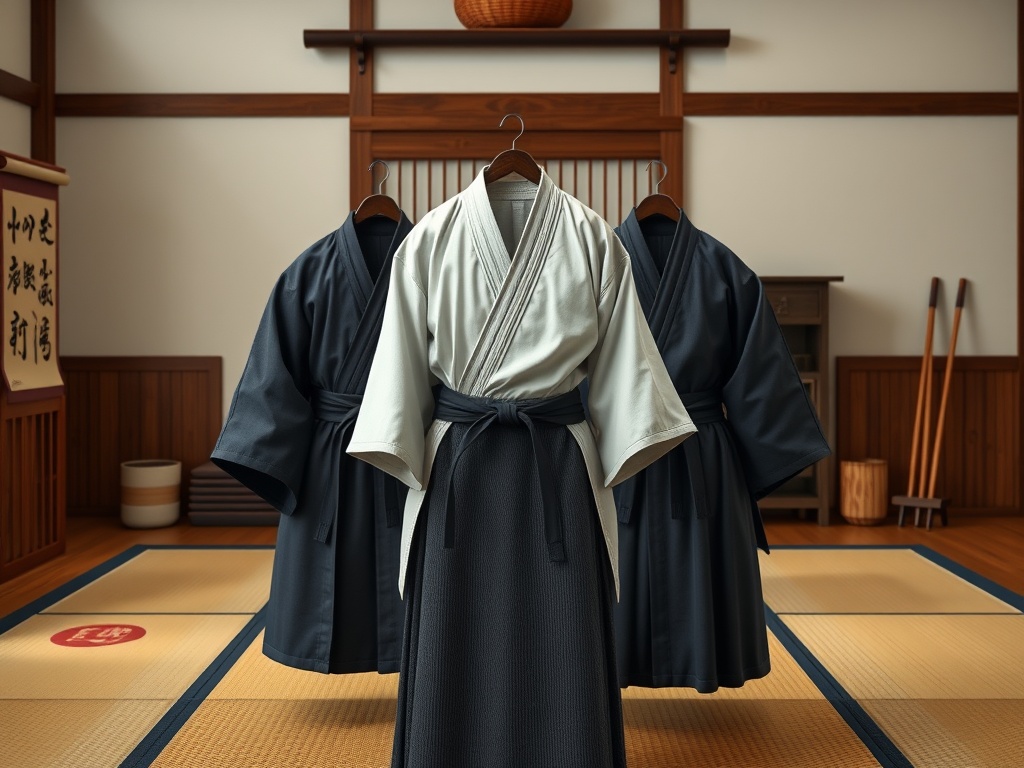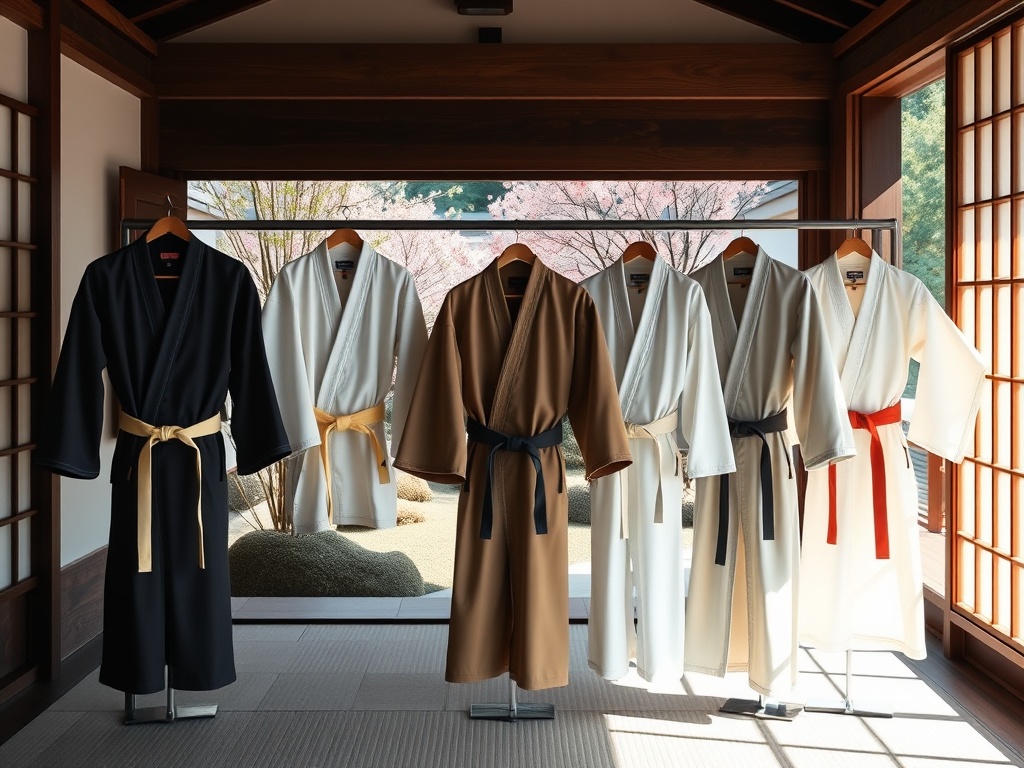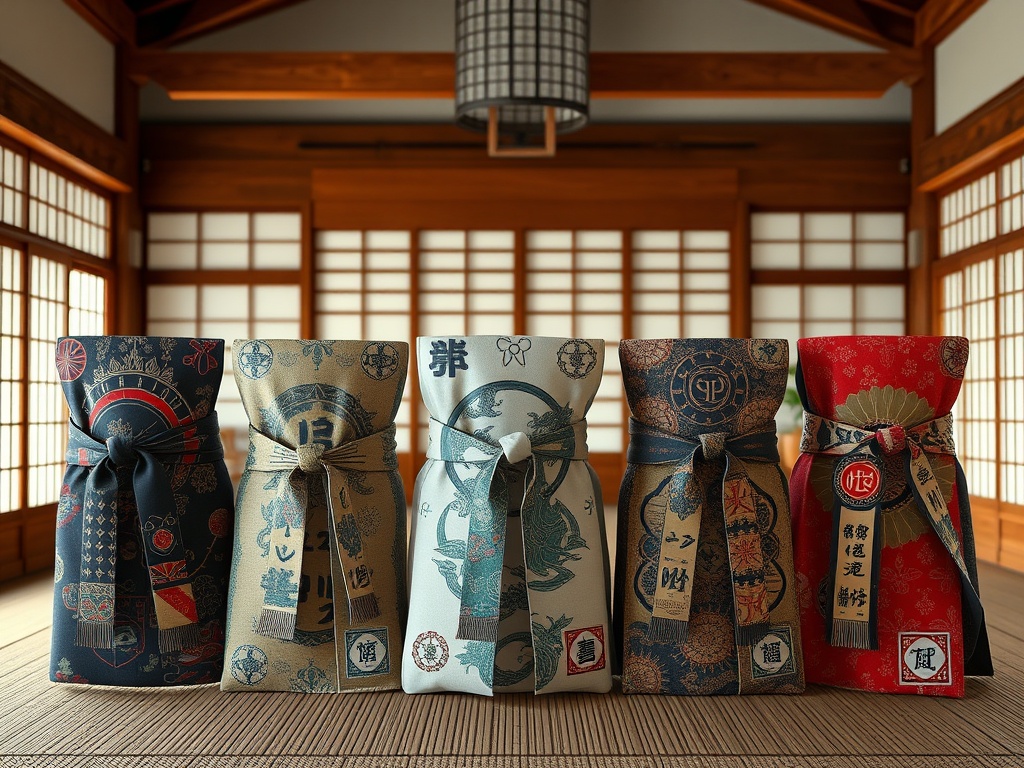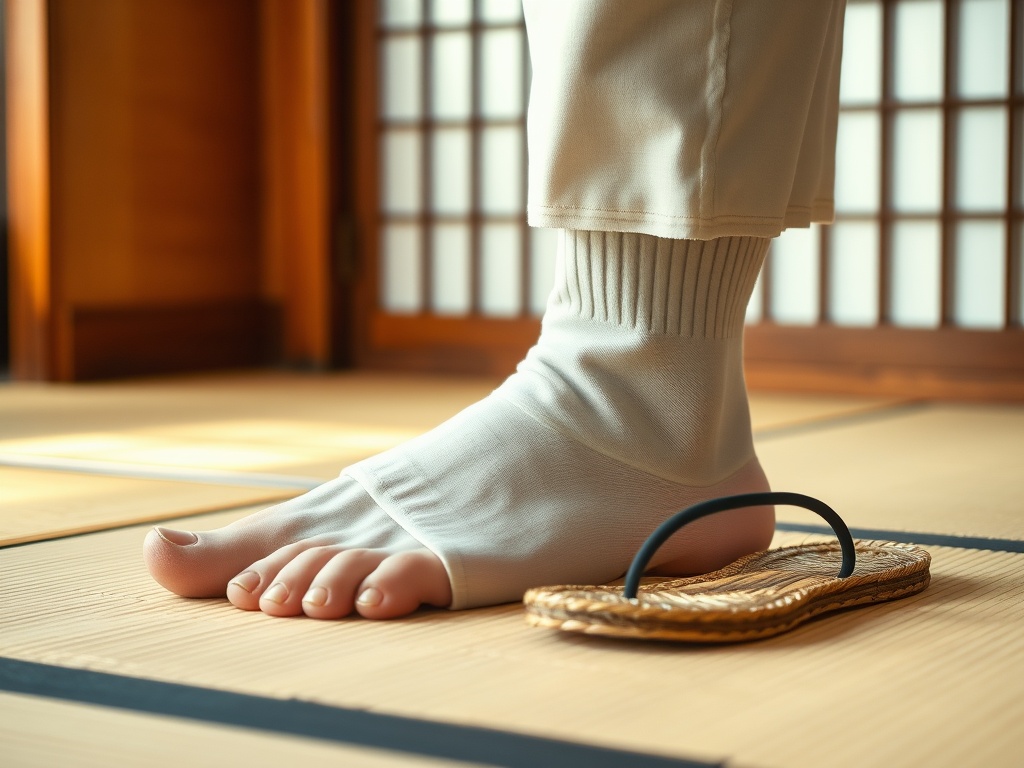The Art of Dressing: Unveiling the Mysteries of the Gi
Win a Free Trip to Japan!
Experience cherry blossoms and ancient temples
Embark on a fascinating journey through the realms of traditional Japanese dojos, where the Gi is more than just attire; it is an embodiment of culture, history, and discipline. For travel and tourism enthusiasts seeking to delve into the heart of Japanese martial arts, understanding the significance and nuances of the Gi is essential. This guide will unravel the layers of tradition, craftsmanship, and etiquette sewn into every Gi, offering a deeper appreciation of its role in martial arts.
The Gi, often seen as a mere uniform, is a tapestry of symbolism and meticulous craftsmanship. Each Gi is crafted with purpose, using traditional techniques that date back centuries. The choice of fabric, the method of stitching, and even the weight of the Gi are carefully considered to reflect the philosophy and values of the discipline it represents.
For those visiting Japan, witnessing a Gi being crafted or observing a martial artist donning this attire is a cultural experience in itself. The Gi is not just apparel; it is a testament to the dedication and artistry of Japanese culture.
Wearing the Gi is an art steeped in etiquette and respect. It is imperative for visitors and aspiring martial artists to understand the protocols surrounding this attire. The process of wearing a Gi is a ritual that demands attention to detail and reverence for the tradition it represents.
Here’s a brief rundown of the Essential Etiquette for Wearing a Gi:
- Respect the Gi: Always treat the Gi with care, folding it neatly after use.
- Proper Tying: Learn the correct method to tie the belt (obi) securely.
- Hierarchy Observance: Acknowledge the dojo’s hierarchy by wearing the appropriate Gi color and belt rank.
Symbolism and Style: The Fascinating World of Obi Belts
As travelers embark on their exploration of Japan’s rich martial arts culture, the obi belt emerges as a captivating symbol that intertwines tradition, hierarchy, and personal journey. The obi, often seen as a mere functional accessory, holds within its folds a profound narrative, rich with history and significance. Much like the Gi, the obi is a reflection of the discipline it accompanies, embodying the spirit and values of the martial artist who wears it.
The journey of the obi belt begins with its craftsmanship. Each obi is meticulously crafted, often by artisans who have honed their skills through generations. The choice of material varies; some are woven from traditional silk, while others prefer durable cotton blends. The colors of the obi are not arbitrary; they represent the rank and journey of the martial artist, with each hue symbolizing a different level of mastery and understanding.
Beyond its aesthetic appeal, the obi is a tool of expression. The way it is tied and worn can convey respect, readiness, and the wearer’s dedication to their art. The intricacy of the knots and the precision required to tie them reflect the martial artist’s discipline and focus. Observing a martial artist expertly tie their obi is akin to witnessing a sacred ritual, one that connects the past with the present.
For visitors to Japan, understanding the symbolism of the obi belt offers a deeper insight into the martial arts world. It is not merely a part of the uniform; it is a bridge to a deeper appreciation of the culture and philosophy that underpin Japanese martial arts. By engaging with this aspect of dojo attire, travel and tourism enthusiasts can gain a more nuanced perspective of the intricate world of traditional Japanese martial practices.
The color of an obi belt is more than a decorative choice; it is a visual representation of a martial artist’s rank and experience. In many martial arts, the journey begins with a white belt, symbolizing purity and the beginning of the learning path. As practitioners progress, the colors darken, representing the accumulation of knowledge and skill.
Each color reflects a significant achievement and marks the wearer’s progression through the ranks. For instance, a blue belt might indicate intermediate mastery, while a black belt symbolizes a high level of expertise and commitment. This system not only instills a sense of pride and accomplishment in the wearer but also helps in recognizing the status and experience of fellow practitioners within the dojo.
Tying an obi is an art form that requires precision and practice. The process is steeped in tradition and serves as a moment of reflection and preparation for the martial artist. An improperly tied obi can signify disrespect or lack of discipline, hence the emphasis on mastering this skill. The intricate knots are not just for show; they are designed to hold the belt securely during practice, reflecting the balance of form and function.
For those visiting a dojo, observing the ritual of obi tying offers a glimpse into the discipline and respect that martial arts demand. It is a moment of quiet introspection, where the martial artist aligns their mind and body, preparing for the practice ahead. This ritual underscores the values of respect, discipline, and harmony that are central to traditional Japanese martial arts.
Footwear with a Story: Understanding the Tabi and Zori
In the captivating world of traditional Japanese martial arts, every element of the attire serves a purpose, narrating its own story of tradition and functionality. The journey into the dojo is incomplete without an understanding of tabi and zori—the quintessential footwear that accompanies martial artists on their path of discipline and skill. For those exploring the depths of Japanese cultural practices, delving into the significance of these traditional footwear options offers a window into the meticulous attention to detail that defines martial arts attire.
The tabi socks are more than just a practical choice for martial artists; they are a cultural artifact that dates back centuries. Characterized by their split-toe design, tabi socks are crafted to provide both flexibility and grip, crucial for movements within the dojo. Traditionally made from robust yet comfortable materials, their design facilitates balance and connection with the floor, enabling practitioners to ground themselves during practice.
Observing the artistry behind tabi construction, one appreciates the blend of functionality and elegance. These socks are often hand-stitched, reflecting the same meticulous craftsmanship that is evident in the creation of the gi. Visitors to Japan will find that wearing tabi not only enhances their dojo experience but also offers a tactile connection to a deep-rooted cultural legacy.
Zori sandals, often worn over tabi, are iconic in their simplicity and functionality. These sandals are traditionally made from straw or leather, with a design that prioritizes ease of movement and comfort. Zori serve as a bridge between the dojo and the external world, offering a convenient transition from the practice space to outdoor environments.
For travel enthusiasts, witnessing the craftsmanship of zori is akin to exploring an art form. Each pair is woven to perfection, ensuring durability and comfort. The art of wearing zori lies in its seamless integration with the tabi, forming a harmonious ensemble that complements the rest of the dojo attire. Their presence is a subtle reminder of the discipline and respect inherent in martial arts, echoing the values of simplicity and functionality.
Respect for dojo footwear is paramount, reflecting the broader cultural emphasis on etiquette and honor. Tabi and zori are to be treated with care, much like the gi, to preserve their integrity and symbolism. Here are key practices to observe:
- Cleanliness: Always ensure that both tabi and zori are clean before entering the dojo, as a sign of respect for the sacred space.
- Proper Storage: Store them neatly when not in use, maintaining the orderliness of the dojo environment.
- Mindful Usage: Handle with care to prevent wear and tear, preserving their longevity and cultural significance.
From Sensei to Student: The Hierarchical Significance of Dojo Attire
Delving into the world of traditional Japanese dojos is akin to stepping into a realm where discipline, respect, and history intertwine seamlessly through attire. For those fascinated by cultural exploration, understanding how dojo attire creates a visual tapestry of hierarchy is essential. From the revered Sensei to the eager student, each element of the attire tells a story of rank, respect, and the journey within the martial arts.
The Significance of Rank in Martial Arts Attire
In a dojo, attire is not just a matter of personal preference; it is a visual representation of one’s journey and status. The Gi and Obi are not mere garments but powerful symbols of a martial artist’s dedication and progress. The color of the obi often denotes an individual’s rank, while the design and quality of the gi can reflect the expertise and experience of the wearer. For travel and tourism enthusiasts, observing the nuanced differences in attire provides a deeper understanding of the dojo’s intricate hierarchy. Each piece of clothing communicates the values of humility, respect, and aspiration, essential elements in the world of martial arts.
The Role of the Sensei’s Attire
The Sensei, or the teacher, holds a revered position within the dojo, and their attire reflects this esteemed status. Often, a Sensei’s gi is distinguished by its quality and detailing, subtly indicating their role as a leader and mentor. The black belt worn by a Sensei is a symbol of mastery and dedication, a testament to years of training and discipline. For visitors, witnessing the Sensei in traditional attire is a profound cultural experience, offering insight into the deep respect and reverence held for those who guide and teach within the martial arts community.
Learning Through Observation: The Student’s Perspective
For students, or deshi, the journey through the ranks is marked by changes in attire, reflecting their growth and learning. Starting with a simple white belt, symbolizing purity and potential, students strive for the honor of donning darker hues as they advance. The process of progressing through the ranks instills a sense of achievement and motivates students to embody the values of discipline and perseverance. For those exploring Japanese martial arts, observing the journey from student to Sensei offers a unique glimpse into the personal and cultural significance of dojo attire, highlighting the respect and commitment embedded within these traditional practices.
Fabric and Function: Exploring the Materials Behind Traditional Dojo Wear
As travelers embark on a journey to explore the heart of Japan’s martial arts, understanding the materials that constitute traditional dojo attire offers a deeper connection to the cultural and functional aspects of this revered practice. The selection of fabrics is not merely a matter of aesthetics but a meticulous process that influences the wearer’s performance and comfort. Each thread woven into the Gi, Obi, and footwear tells a story of tradition, innovation, and adaptability, making it essential for cultural enthusiasts to appreciate the fabric behind the function.
The Gi, a cornerstone of dojo attire, is crafted from materials that ensure durability and comfort, reflecting the discipline it represents. Traditionally, heavyweight cotton is favored for its strength and breathability, allowing martial artists to move freely while maintaining the structural integrity of the garment. This choice of fabric underscores the balance between functionality and tradition, catering to the rigorous demands of martial practice while honoring age-old techniques. For those visiting Japan, observing the careful selection and crafting of Gi fabric provides insight into the precision and dedication that define Japanese martial arts.
The Obi belt is an integral component of dojo attire, where its material choices are laden with both symbolic and practical significance. While silk is traditionally associated with formal occasions due to its luxurious texture and sheen, the dojo often calls for more robust materials like cotton or jute that withstand the rigors of training. The material not only provides the necessary grip and durability but also evolves over time, mirroring the martial artist’s journey. For travel and tourism enthusiasts, understanding the materiality of the Obi offers a nuanced perspective on the intersection of tradition and personal narrative within martial arts.
The materials used in Tabi and Zori further illuminate the intricate relationship between tradition and modern functionality. Tabi, often made from a blend of cotton and synthetic fibers, offers flexibility and durability, essential for the dynamic movements within a dojo. Meanwhile, Zori sandals, traditionally crafted from straw or modern alternatives like rubber, provide a seamless transition between indoor and outdoor environments. This interplay of materials highlights how traditional Japanese footwear adapts to contemporary needs while preserving its cultural roots, offering travelers a tangible connection to the evolution of martial arts attire.
Cultural Etiquette: Wearing the Spirit of Respect in the Dojo
Stepping into a traditional Japanese dojo is akin to entering a sacred space where every element, from attire to movement, respects centuries-old traditions. For travel and tourism enthusiasts eager to immerse themselves in this cultural experience, understanding the etiquette associated with dojo attire is crucial. This guide will illuminate how the garments worn within the dojo are imbued with respect, not just for martial arts, but for the culture that has nurtured these practices over generations.
In the dojo, attire serves as a conduit for expressing respect and humility. The Gi, Obi, and traditional footwear like Tabi and Zori, are more than functional garments; they are symbols that communicate a practitioner’s dedication and reverence for their art form. Understanding the significance of each element and adhering to the associated etiquette enhances one’s appreciation of the martial arts culture.
- Key Etiquette Practices in the Dojo:
- Mindful Dressing: Ensure your Gi is clean and in good condition, reflecting respect for the art and your peers.
- Correct Alignment: Wear the Gi and Obi aligned properly, as a sign of discipline and attention to detail.
- Footwear Protocol: Remove Zori before stepping onto the training mat, maintaining the purity of the practice space.
- Hierarchical Observance: Recognize the dojo hierarchy in your attire choices, from belt color to Gi style.
- Post-Training Care: Fold your Gi neatly after use, demonstrating respect for the traditional attire.
The Sensei, or teacher, plays a pivotal role in upholding and transmitting the cultural etiquette of dojo attire. Their meticulous attention to how they wear and care for their Gi and Obi sets a standard for students to emulate. Observing a Sensei’s approach to attire offers insight into the deeper values of martial arts, emphasizing not just skill, but also the integrity and respect inherent in the practice. For visitors, witnessing this dynamic is an educational experience, showcasing the harmony between tradition and discipline.
While attire is a significant component of dojo etiquette, the spirit of respect extends to behavior and interaction within the dojo. Bowing upon entering and leaving the dojo, showing gratitude to instructors and peers, and maintaining silence during practice are all integral to the cultural experience. These practices highlight a commitment to the values that underpin martial arts, providing visitors a holistic understanding of the respect that permeates dojo life.



